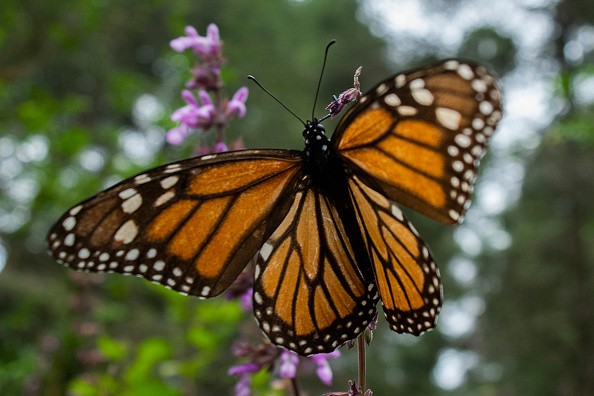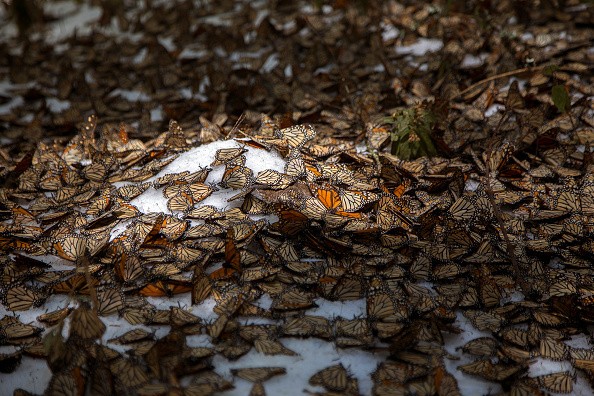The orange-and-black Western monarch butterflies, which are almost vanishing give scientists some hope.

Monarch Butterfly Population Increase
The number of monarchs wintering along central coast of California is increasing after the population, got to an all-time low in 2020.
More than 13,000 monarch butterflies have already landed in Monterey County this year, raising optimism among the grove's workers and visitors that the population of the vulnerable insects can increase again, according to Phys.org.
In the absence of a scientific explanation, Xerces Society for Invertebrate Conservation's Director of Endangered Species, Sarina Jepsen, believes that a mix of variables, including improved breeding circumstances, is to blame.
It takes thousands of miles for eastern monarch butterflies to migrate from southern Canada and the northeastern United States to Mexico for the winter. Since the mid-1990s, scientists believe that the eastern U.S. monarch population has decreased by around 80 percent, but the decline in the western U.S. has been much more pronounced.
In the 1980s, there were millions of Western monarch butterflies that overwintered in California, but since then, the number has plummeted by more than 99 percent due to the degradation of milkweed habitat along their migratory path.
The impact of climate change has been documented by scientists as well. One of the primary causes of the monarch's imminent extinction is climate change, which disrupts the monarch's annual 3,000-mile (4,828-kilometer) journey during springtime and the blooming of wildflowers.
The habitat of monarch butterflies is not protected by either state or federal law. It was last year that they were denied federal protection, but now they are among the federal Endangered Species Act contenders.
Migration of Western Monarch Butterflies
There are several areas and even trees where western monarch butterflies gather throughout the winter months, coming year after year to remain warm.
As soon as the weather warms up in March, the monarch butterflies begin to migrate across California, eventually reaching the rest of the country by the end of the month.
Every year, monarchs from all over the west make the long journey to the central California Pacific coast, where they winter in around 100 different locations.
The Monarch Grove Sanctuary, a city-owned property in Pacific Grove, where no monarch butterflies appeared last year, is one of the well-known wintering locations.
Population of monarch butterfly have been low for years in the city 70 miles (112 kilometers) south of San Francisco.
Every October, the city has a parade in honor of the orange and black butterfly which is now known as "Butterfly Town, USA." A $1,000 fine is imposed for tampering with a monarch.

Western Monarch Butterfly Count
In the 1980s, Mendocino County stretched all the way to Baja California, Mexico. Now, the majority of their roosting locations are centered in the central coast of California.
Jepsen said that an unofficial count by researchers and volunteers suggests that over 50,000 monarchs are at overwintering places.
Even while this isn't a recovery, Jepsen expressed optimism and expressed gratitude that there are still monarchs in the area, which provides scientists more time to work on restoring the Western Monarch Migration.
For more news, updates about monarch butterflies and similar topics don't forget to follow Nature World News!
© 2025 NatureWorldNews.com All rights reserved. Do not reproduce without permission.





